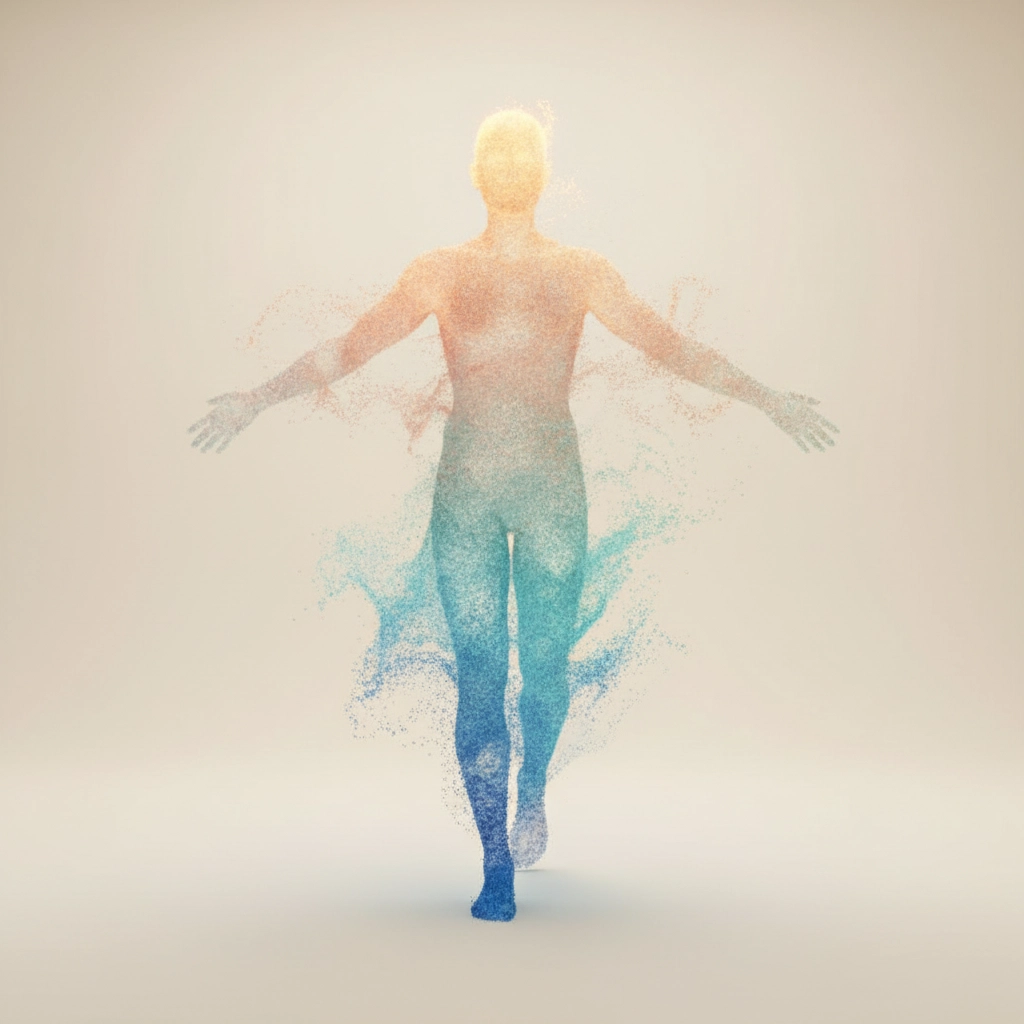Hope, Embodied: How Science Reveals the Body–Brain Power of Future-Oriented Healing
- davidpartnertech
- Nov 17
- 4 min read
What if hope isn't just a feeling, but a whole-body experience that literally rewires your brain for healing? Recent neuroscience reveals something remarkable: hope operates as an embodied, energetic state that creates measurable changes in your nervous system, posture, and capacity for recovery.

For those of us working in NeuroSomatic Therapy and chronic pain relief, this research opens fascinating doors. Hope isn't wishful thinking: it's a sophisticated brain-body system that can be understood, cultivated, and harnessed for healing.
Hope as Your Body's Approach System
Psychologist C.R. Snyder's groundbreaking research revealed that hope functions as an embodied, approach-oriented motivational system. Unlike passive optimism, hope actively engages two powerful components: agency (your sense of personal power to create change) and pathways thinking (your ability to find multiple routes toward your goals).
Here's what's fascinating: when you experience genuine hope, your entire physiology shifts. Your nervous system moves from defensive, survival-based patterns into what researchers call "approach behaviors." Your posture opens, your breathing deepens, and your brain starts firing in patterns associated with goal-directed action rather than threat detection.
This isn't just psychology: it's measurable. Snyder's studies showed that hopeful states create detectable changes in behavior, emotional regulation, and even physiological markers like heart rate variability and stress hormones.

Your Body Thinks, Your Brain Feels
Cognitive neuroscientist Lawrence Barsalou's research on "grounded cognition" reveals something that revolutionizes how we understand emotions like hope. Our cognitive states: including future-oriented hope: don't just happen in our heads. They're grounded in sensorimotor, interoceptive, and emotional systems throughout our bodies.
What this means: when you imagine a hopeful future, your body is actually running simulations. Your muscles, organs, and nervous system create subtle physical patterns that match the anticipated experience. These "embodied simulations" shape not just how you think about the future, but how you feel in your body right now.
For chronic pain sufferers, this has profound implications. The body that's learned to anticipate pain can also learn to anticipate relief, healing, and expanded possibilities. Your interoceptive awareness: your ability to sense internal body signals: becomes a pathway for cultivating hopeful states that support recovery.
The Neural Networks of Future-Oriented Healing
Martin Seligman's team discovered that hope and future-oriented thinking activate specific neural networks connecting the prefrontal cortex, hippocampus, and default mode network. This isn't abstract: it's a measurable brain-body integration system.
Here's what happens: your prefrontal cortex (executive function) works with your hippocampus (memory and spatial navigation) to create what researchers call "prospective thinking." But here's the key insight: this process integrates memory, imagination, and current bodily states to shape your actual actions.
Your brain doesn't just think about the future; it uses your body's present-moment sensations, your stored experiences, and your imaginative capacity to literally navigate toward healing possibilities. This is why Somatic Therapy Montreal approaches often emphasize present-moment body awareness as a foundation for future-oriented change.
Physical Markers of Hope in Your Body
When hope is genuinely embodied, you can observe specific physical and behavioral changes:
Postural shifts: The chest opens, shoulders drop away from the ears, and the head lifts slightly. There's a sense of expansion rather than contraction.
Breathing patterns: Hope correlates with deeper, more rhythmic breathing that stimulates the vagus nerve and activates parasympathetic recovery modes.
Nervous system activation: Heart rate variability improves, stress hormones decrease, and the body shifts from hypervigilance into what polyvagal theory calls "social engagement."
Movement quality: Hopeful individuals show more fluid, explorative movements. There's less guarding and more willingness to reach, extend, and engage with their environment.
Facial expressions: Subtle changes in eye contact, jaw tension, and micro-expressions signal approach rather than avoidance states.
These aren't just side effects of feeling hopeful: they're integral to how hope functions as a body-brain system for stress and pain management.

Hope and the Nervous System
From a neurosomatic perspective, hope represents a fundamental shift in nervous system organization. When we're trapped in chronic pain or anxiety patterns, our autonomic nervous system often becomes locked in defensive modes: fight, flight, or freeze responses that served our survival but limit our healing.
Embodied hope activates what Stephen Porges calls the "neural platforms" for social engagement and restoration. Your ventral vagal complex comes online, supporting digestion, immune function, and cellular repair processes. This isn't just feeling better: it's creating the physiological conditions necessary for actual tissue healing and nervous system reorganization.
For chronic pain relief, this means hope isn't just emotional support: it's a neurobiological intervention that can literally change pain processing patterns in your spinal cord and brain.
Practical Pathways: Cultivating Embodied Hope
Based on this research, here are two simple practices for nurturing hope as a body-brain state:
The Hopeful Posture Practice: Several times daily, consciously adopt what researchers call "approach posture." Stand or sit with your chest gently open, shoulders relaxed, and head balanced over your spine. Take three slow breaths, allowing your ribcage to expand. Notice if this simple postural shift changes your mental state or sense of possibility.
Future-Body Visualization: Spend 2-3 minutes imagining yourself moving freely and comfortably in a situation you're working toward. Don't just picture it: let your body feel the sensations of ease, strength, or joy you're anticipating. This engages Barsalou's embodied simulation systems, literally training your nervous system for the experiences you want to create.
The beauty of understanding hope as embodied is that it gives us concrete ways to support healing that honor both scientific research and the wisdom of lived experience.
References:
Ready to explore how embodied hope can support your healing journey? Whether you're dealing with chronic pain, anxiety, or simply want to cultivate more resilience, our NeuroSomatic Therapy approach can help you understand and work with your body's natural capacity for recovery. Book a session to discover how your nervous system can become an ally in creating the future you're hoping for.


Comments